Ryan Hall's Blog, page 374
July 29, 2015
Get Strong, Get Fast: Cross-Train Like Olympian Nick Symmonds
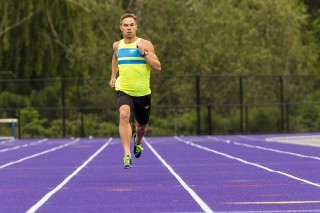
Photo: Stephen Matera
Cross-train like Olympian Nick Symmonds to gain strength, increase your speed, avoid injury, and keep things fresh.
Like it or not, running takes a toll on our bodies. Train too hard, and sooner or later you won’t be training at all. The best insurance for staying injury-free is a strong body. And this added strength is best gained not from logging more miles, but from embracing other activities that engage your metabolic system and increase your body’s overall functional strength.
We caught up with two-time U.S. Olympic middle-distance runner Nick Symmonds, a huge advocate of cross-training, as he worked out in his adopted town of Seattle—a true urban playground for endurance athletes. We talked with him and his coaches to learn how you can benefit from a varied and fun approach to your run training.
“I’m a huge believer in cross-category exercises,” says Danny Mackey, coach of the Brooks Beasts elite training group and one of Symmonds’ chief advisers. “Because contact with the ground is such a stressful experience, we can’t exercise 35 to 40 hours of running each week like a cyclist can on a bicycle, so you’ve got to get it in other ways.”
So how does cross-training make you stronger and faster?
You can get the same aerobic effect from other activities with less pounding. If you think of exercise in terms of units, you can train longer with low-impact activities than you can with running, allowing you to put in more time building up your speed or your overall endurance than you can strictly by running.
Those of us who love running love to self-identify as runners—and in the past, that meant sometimes forgoing other sports. But becoming a more effective runner now means embracing other activities. It’ll boost your speed, strength and endurance, and lessen your risk of injury. In the end, this will allow you to run longer and faster—which is what we’re all really after, isn’t it?
RELATED: Why Runners Should Embrace Cross-Training
The post Get Strong, Get Fast: Cross-Train Like Olympian Nick Symmonds appeared first on Competitor.com.
Workout of the Week: Pardon The (Uphill) Interruption
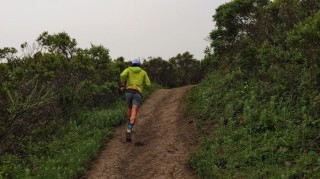
Mixing hill repeats into some of your interval workouts will challenge the musculoskeletal system as well as the aerobic system. Photo: Mario Fraioli | Competitor
Insert some incline into your next interval workout.
In the early phases of a training program, many runners regularly do hill repeats as a way to work on lower-leg strength, improve power and reinforce the basic tenets of good running mechanics. Later in the training cycle, however, hill workouts tend to get replaced by a weekly interval session (or two) in order to improve speed, enhance efficiency and dial in race pace. And while there’s nothing wrong with transitioning to more frequent interval work leading up to race day, it’s always surprised me that many coaches and athletes seem to forget about hill workouts altogether once they get into the meat of the training cycle.
One of my favorite early-to-mid-season workouts I assign my athletes interrupts a traditional interval workout with a set (or sets) of hill repeats. The purpose of doing so is to introduce a new training stimulus which will challenge the musculoskeletal system in addition to the aerobic system. Also, keeping some hill work in the weekly rotation acts as a means of muscular support during a period that’s usually heavily focused on improving specific fitness for a goal race.
RELATED: Early-Season Strength-Building Workouts
So how long should your hill repeats sandwiched into the middle of an interval workout be? It depends on what you’re trying to achieve with them. For emphasizing pure power and maximum muscle-fiber recruitment, max-intensity sprints in the range of 10-12 seconds with full recovery between repeats will do the trick, while longer hill repeats in the range of 30 to 90 seconds will help you to develop a greater level of fatigue resistance in your legs.
Here are three examples of classic short, medium and long interval workouts, along with different options for effectively interrupting them with an incline.
Option 1: Short Intervals
Typical Workout: 12 x 400m at 5K race pace (or slightly faster) with 60-90 seconds recovery between repetitions
Interruption Option: 2 sets of 4-5 x 400m at 5K race pace (0r slightly faster) with 60-90 seconds recovery between repetitions. Follow each set of flat 400m repeats with 2 x 60-second hill repeats on a moderately steep grade at the same effort. Recover from each repeat by jogging back down to the bottom of the hill. The added element of the incline stimulates promotes muscular gains you don’t get from running fast on flat ground.
Option 2: Medium Intervals
Typical Workout: 5 x 6:00 at 10K race effort with 3:00 recovery jog between repetitions
Interruption Option: Use the base of a moderately steep hill as the starting point for your intervals. Begin your 6:00 reps at the base of a hill, running away from it on a flat stretch of ground for 3:00 at 10K race effort before turning around and returning at the same pace. Take 2-3:00 of walking/jogging recovery after each flat 6:00 rep, then charge up the hill for 30 seconds at a hard effort that’s 10-15 percent short of all-out. Focus on driving your arms, getting up on your toes and charging up the hill with strong form. After competing the 30-second uphill effort, take 2-3:00 recovery and repeat the sequence four more times.
Option 3: Long Intervals
Typical Workout: 3-4 x 2 miles at half-marathon race pace with 3:00 recovery jog between repetitions
Interruption Option: Take 2:30 recovery after each 2-mile repetition and then perform 2 x 10-second hill sprints at max effort. Recover fully with 1:30 to 2:00 of walking/light jogging after each hill sprint before beginning the next 2-mile/2 x 10-second hill sprint sequence. The short, but intense uphill efforts recruit a greater number of muscle fibers, which will rapidly increase the muscular fatigue in your legs, making each subsequent 2-mile effort that much more of a challenge. At the end of the session, you’ll have gotten in 8 miles of running at goal half-marathon race pace, 80 seconds worth of high-intensity hill work and a toasted set of legs. This is a big workout—be sure to recover well in the days that follow!
The post Workout of the Week: Pardon The (Uphill) Interruption appeared first on Competitor.com.
A Trail Runner’s Guide to Snakes
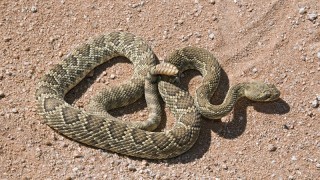
Photo: Shutterstock.com
Adapted with permission of VeloPress from Trailhead: The Dirt on All Things Trail Running by Lisa Jhung with illustrations by Charlie Layton. For more, visit velopress.com/trail.
Roughly 100 types of snakes slither around the United States, most of them nonvenomous and essentially harmless. However, there are 20 species of venomous snakes in the U.S.: 16 types of rattlesnakes, 2 types of coral snakes, and the cottonmouth (also known as “water moccasin”). Coral snakes have the most potent venom.
These cold-blooded creatures like to warm themselves in sunny places on sunny days. When it’s hot, they cool themselves in the shade. Their most active period is spring through early fall. They are nocturnal hunters, spending the day resting and sunning themselves. Depending on the type of snake, they eat small rodents, birds, fish, frogs and insects.
If you come across a snake, knowing what type it is can be a potential lifesaver should you get bitten. Informing medical professionals about the snake that struck you helps them quickly administer the proper treatment.
Rattlesnakes
Rattlesnakes are common all over the continental United States, especially in the Southwest. They’re between 1 and 8 feet long, with bulky bodies and catlike pupils with no eyelids. Their heads are triangular, wide at the neck, and they have a pit between their eyes and nostrils (a distinguishing feature of a pit viper). They can be brown, gray, rust, yellow, cream, beige and of various patterns.
The most distinguishing rattlesnake feature is the rattle at the end of their tails, but know that rattles sometimes fall off.
Cottonmouth Snakes
Also known as water moccasins, these reptiles live in the southeastern United States, including eastern Texas. They can be up to 4 feet long and have large, triangular heads with pits between their eyes and nostrils (they are a type of pit viper, like rattlensnakes). Their bulky bodies taper to a narrow tail and are dark brown or dull black with lighter banding. When a cottonmouth opens its mouth in aggression, the sticky “spit” looks as if it just woke up after a bender and needs a Big Gulp.
Coral Snakes
These are the most lethal snakes in the U.S. but look an awful lot like the less dangerous scarlet king snake. Keep this rhyme in mind:
Red touch yellow—kill a fellow
Red touch black—venom lack
What to Do?
Regardless of the type of snake you encounter on the trail, your actions should be the same.
Do:
Leave the snake alone
Give it a wide berth.
Back away calmly as quickly and quietly as you can.
Don’t:
Stick your hands in crevices
Sit on logs or craggy rocks without looking around them and inside.
Step over a long into a shady, possible snake-napping spot.
Provoke the snake in any way.
RELATED: Out There: Running for My Life, From Wildlife
The post A Trail Runner’s Guide to Snakes appeared first on Competitor.com.
Shoe of the Week: Nike Air Zoom Wildhorse 3
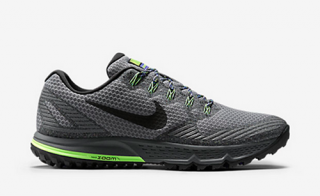
The third version of the Wildhorse has more cushioning and protection than the previous editions.
Nike enhanced this shoe by significantly updating the upper, cushioning and outsole and, in the process, finally differentiated it from its other current trail shoe, the lower-to-the-ground and less cushioned Air Zoom Terra Kiger 3. Although the new version of the Wildhorse is about an ounce heavier than the previous one, the changes make it a better shoe for long runs on more technical terrain. Aggressive treads on the outsole—a mix of sticky rubber down the center and chunky lugs around the perimeter, including on the rounded heel—makes for solid grip on a range of surfaces. Enhanced protection comes from a durable but flexible rock plate under the forefoot, and TPU overlays across the toes and around the heel, keeping rocks and other trail debris from jabbing feet. It has a comfortable upper that pulls securely around the foot via lightweight Flywire cables. Minimal seams throughout mean zero irritation on your feet. Testers raved about the shoe’s smooth ride, which comes from a combination of the anatomically rounded heel and springy cushioning compounds. It has a wider toe box for toe splaying (and foot swelling) but a more snug midfoot fit.
“I was really impressed by how well this shoe performed on dry trails as well as on wet, technical terrain,” said one tester. “It provides a lot of protection for your feet without feeling the least bit clunky.”
Despite the enhancements and extra material, the Wildhorse still offers amazing proprioceptive “feel” for the trail, allowing it to be both fast and agile as well as notably cushioned for long-haul comfort.
This shoe is for you if: You run a variety of trails at a range of speeds and distances and want a shoe that has some cushion and protection but doesn’t sacrifice the “feel” of the trail.
Price: $110
Weights: 10.3 oz. (men), 8.8 oz. (women)
Heel-toe Offset: 8mm; 26mm (heel), 18mm (forefoot)
Info: NikeRunning.com
RELATED: Shoe of the Week—New Balance 101
The post Shoe of the Week: Nike Air Zoom Wildhorse 3 appeared first on Competitor.com.
July 28, 2015
The 10 Largest Half Marathons in the U.S.
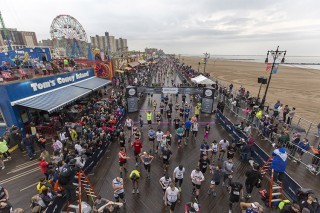
The half marathon distance is as big as ever in the United States. According to Running USA, 2014 saw the 13.1-mile distance surpass 2 million finishers for the first time.
The growth has led to an explosion in big races, too—of the 2,200 half marathons in the U.S., 32 of them had more than 10,000 finishers (in 2000, there was just one). Of those, seven had more than 20,000 finishers.
Here’s a closer look at those races that bring a crowd—the largest half marathons in the United States.
Photo Gallery
1 of {count}
Back to Start
View Larger Image

1. Brooklyn Half Marathon
2014 finishers: 25,610
One of the hardest half marathons to gain an entry to, the 2015 version of this New York City race sold out in just 7 hours—extremely fast for a 13.1-mile race with 25,000 entries available. The race has come a long way since its debut in 1981, and the course now takes runners from Prospect Park to the Coney Island Boardwalk. This race is No. 1 based on 2014 finisher totals, but NYRR reports that the 2015 race in May exceeded 26,000 finishers. (Photo: Courtesy of NYRR)
View Larger Image

2. OneAmerica 500 Festival Mini-Marathon
2014 finishers: 25,524
This hugely popular race in Indianapolis has come in at No. 1 for 23 of the past 24 years, but fell short by just 86 finishers in 2014. It’s known (besides its size) for the 2.5-mile loop around the Indianapolis Motor Speedway track from miles 6-8.
View Larger Image
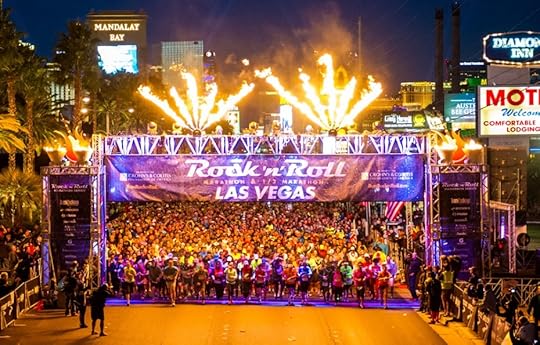
3. Rock 'n' Roll Las Vegas
2014 finishers: 25,227
Strip at Night. It’s no wonder this race is in high demand year after year—it’s one of the only chances to run the famed Las Vegas Boulevard with the millions of lights illuminating the night sky. The half marathon starts at Mandalay Bay, stays on Las Vegas Boulevard for the entire race before finishing at the Mirage.
View Larger Image

4. Nike Women's San Francisco Half
2014 finishers: 24,448
One of the few half marathons to use a lottery due to excessive demand, neither a pricey entry fee nor a tough course stops thousands from wanting in to this race in San Francisco. The perks? Besides a tour of the beautiful Bay Area, the finish line “medal”—a Tiffany necklace—is one of the most popular in running.
View Larger Image
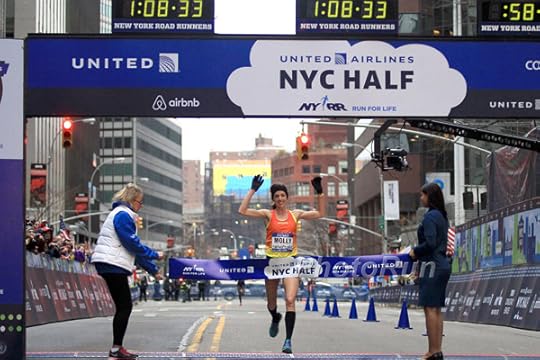
5. NYC Half
2014 finishers: 20,801
A relatively new race on this list (it started in 2006), the race nonetheless was an immediate hit. The 2014 race exceeded 20,000 finishers, taking runners from Central Park, through Times Square, along the West Side Highway adjacent to the Hudson River, and finishing in Lower Manhattan. The race often has a star-studded elite field—Haile Gebrselassie ran a 59:24 here, and stars like Mo Farah, Wilson Kipsang and Molly Huddle have won in past years. (Photo: PhotoRun.net)
View Larger Image

6. Disney Princess Half Marathon
2014 finishers: 20,770
Like its sister, the Tinkerbell Half Marathon at Disneyland in California, this race at Disney World in Florida is a women-focused half marathon, one of the largest of its kind. The race takes place annually in February and starts and finishes at Epcot, while taking runners through Magic Kingdom as well.
View Larger Image
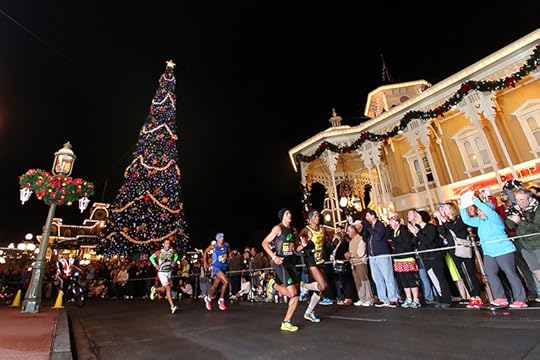
7. Walt Disney World Half Marathon
2014 finishers: 20,243
Combined with a 5K, 10K and marathon the same weekend in January, the Disney World Half Marathon near Orlando, Fla., makes up a large chunk of an enormous weekend of running at the resort, which brings in 50,000 runners and 50,000 spectators in all. The half marathon goes through Epcot and Magic Kingdom with a finish at Spaceship Earth. (Photo: Jenny Torres)
View Larger Image

8. Country Music Half Marathon
2014 finishers: 19,149
This race features memorable scenery and great southern charm—plus a great benefiting charity, the St. Jude Children’s Research Hospital. One of the most popular in the Rock ‘n’ Roll Marathon series, the half experiences downtown Nashville, Tenn., along with views of the Cumberland River, the Country Music Hall of Fame and a finish at LP Field, home of the Tennessee Titans.
View Larger Image
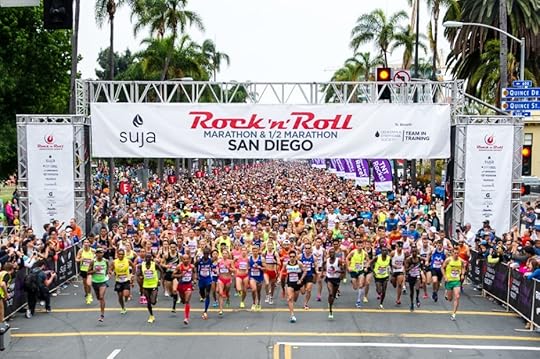
9. Rock 'n' Roll San Diego
2014 finishers: 16,890
San Diego’s signature marathon added a half in 2010 and it was an immediate hit. The race explores all there is to love about “America’s Finest City” including Balboa Park, Mission Bay, the Gaslamp District and more.
View Larger Image
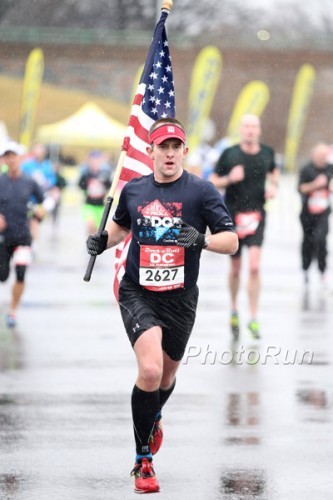
10. Rock 'n' Roll DC
2014 finishers: 16,767
A great way to explore the nation’s capital, the 2015 race started at the National Mall, circled the district and finished at RFK Stadium.
Related Galleries
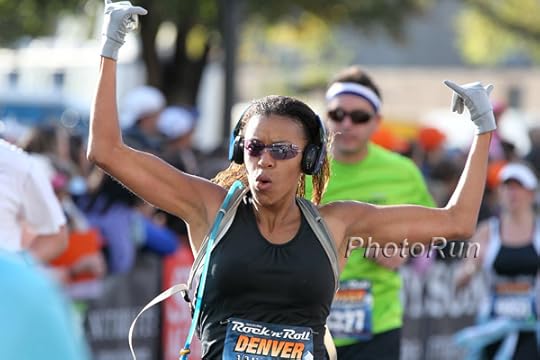
Rock ‘N’ Roll Marathon Transforms Denver

2010 Country Music Marathon Photo Gallery

2010 Rock ‘n’ Roll Dallas Half Marathon Photo Gallery

2010 P.F. Chang’s Rock ‘n’ Roll Marathon Photo Gallery

More Galleries
The post The 10 Largest Half Marathons in the U.S. appeared first on Competitor.com.
Jessica Hofheimer: Rolling With It
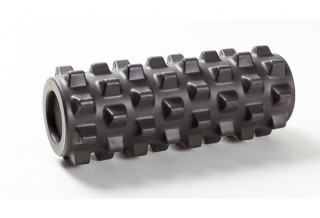
During marathon training, I set aside about 15-20 minutes a day, every day, for a session with my foam roller and self-massage tools. When the mileage increases and long runs and speed workouts are in full swing, muscles tend to tighten and beg for attention. Since paying for a regular massage can be cost prohibitive (unfortunately!), it is up to us to take care of treating our muscles to some myofascial release. I strongly believe this should be a part of every runner’s training regimen. It makes a big difference and a little tender loving care goes a long way!
The foam roller is a large cylindrical piece of high-density foam. When you “roll” your muscles across the foam it serves to loosen tissues and break up any adhesions or scarring in the fascia. Merriam-Webster defines fascia as “a sheet of connective tissue covering or binding together body structures (as muscles).” In more relatable terms, it’s the tissue that holds groups of muscles, blood vessels and nerves together, much like plastic wrap.
When we have tight muscles, the fascia becomes less like plastic wrap (which is soft and conforms to the contents it is holding) and more like a hard rubbery material. Tight muscles inhibit mobility and can sometimes cause problems with gait as well as create discomfort. Therefore, it is important to massage it out to loosen things up to restore pliability. The foam roller is perfect for this. The rolling action pumps blood out of and then back into the area and sort of kneads the muscle (like a giant rolling pin), loosening things up.
There are also other types of self-massage tools. One of my favorites is the Tiger Tail – a stick with a layer of foam (similar to the foam on the foam roller) that spins on the stick and can be pressed and rolled over a muscle. It facilitates the same results as the large foam roller, but I find it is more helpful for smaller areas like the bottom of the feet, the Achilles tendon and the calf muscles.
My regular routine includes rolling out my hamstrings, calves, quads, IT bands, bottoms of my feet, glutes and hips every night–rolling over each muscle group about 5-10 times, depending on the tightness. If I have an area that is especially tight, I will spend more time there, sometimes using my Rumble Roller (which has tire tread-like bumps on it) or a tennis or racquetball on those spots.
It can hurt and doesn’t always feel so good in the moment! But, like a good run, I never regret making the time to roll out my muscles and always feel better when I am done!
The post Jessica Hofheimer: Rolling With It appeared first on Competitor.com.
Laura Anderson: Train for the Course
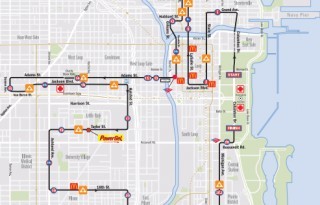
Training for a marathon means working hard for a few months, and then having just one day to put it all together. During training you have a LOT of control; you can choose your routes, the terrain you run on, you can even choose to avoid undesirable weather. Race day is a different story. The best way to prepare is to train specifically for the marathon you will be running, not just any 26.2 miles.
When laying out training, planning routes, and detailing logistics for workouts, early on in the training cycle, I like to nail down the key race specific-elements that I can prepare for.
Timing
Note the day of the week, and the time of day that a race takes place. For those travelling to different time zones for a race, note what time of day in YOUR time zone that will feel like to you.
Tip: Schedule a few ‘dress rehearsal’ long runs leading up to the race. Plan on running at the race start time (including time change), this allows you to nail down your race morning routine ahead of time.
Course Elevation
There are courses that are pancake flat, some are notoriously hilly, some feature large descents and many have rolling terrain. Each of these could require different training; your training for Chicago and Boston would have different approaches. Chicago features flat profile, whereas Boston’s downhill start and rolling Newton Hills later on challenge your body in different ways.
Tip: Try and plan some training routes that mimic the race course. If you know that the second half will be hillier, incorporate hills at the end of your longer runs to prepare for climbing on tired legs. If you know that the race features long flat sections, find some similar routes to practice running in the same “gear” for extended periods of time.
Course Logistics
A course might be a large loop, multiple loops, out-and-back or a point-to-point route. It can be a mental game if you know you are running the same route a few times, or will have to run back towards other runners on an out-and-back route.
Tip: Find some training routes that mimic the type of racecourse. If you are training for a double loop marathon, run your 20-miler on a 10-mile loop. For point-to-point training, have a friend or family member drop you off X miles from home and make your way back.
Course Terrain/Surface
Surfaces such as crushed gravel, bike paths, technical trails, concrete and pavement each take different tolls on the body. The bulk of the training you do should reflect the your race surface.
Tip: Running on softer surfaces occasionally can help reduce the stress on the joints, and also provide a mental break from your usual routes.
Fueling/Aid Stations
Note where water stops will be along the course, as well as which aid stations have fuel. It can also come in handy to know where portable bathrooms will be along the route.
Tip: Treat the race like a road trip; you know that you will need fuel every X amount of miles. If you know this ahead of time, you can plan where/when you will fuel along the way so that you don’t run out. Try taking your gels and fuel on training runs at the same time you will in the race, factoring in water stops.
Training and incorporating race specific elements throughout the months leading up to your big event help build confidence and ease stress on race day. The way I see it, if you know what you’re getting into and prepare as smart as you can for key factors, you’ll be more in control on race day.
The post Laura Anderson: Train for the Course appeared first on Competitor.com.
Siblings Rekindle Fitness to Honor Parents, Inspire Their Families
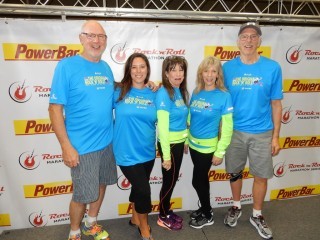
Larry Moss, Katie Spence, Cheryl Moss Reidy, Jody Moss Spence and Steve Moss (left to right) share a moment before running the Rock ‘n’ Roll San Diego Half Marathon in May. Photo: Dan Cruz

Larry Moss, Katie Spence, Cheryl Moss Reidy, Jody Moss Spence and Steve Moss (left to right) share a moment before running the Rock ‘n’ Roll San Diego Half Marathon in May. Photo: Dan Cruz
Thanks to his parents, Larry Moss says he grew up in an very active family. He and his siblings were involved in numerous sports and activities, and, individually and collectively, they were always on the go. Baseball, gymnastics, swimming, cheerleading, track and field, waterskiing—you name it and they were doing it.
But fast-forward a few decades and he found—like many people in their late 50s—that life had gotten in the way and he wasn’t nearly as active or fit as he would have liked. When his father, Herb, passed away in 2009, Larry looked in the mirror and realized he was 40 pounds overweight and hadn’t run a step in 16 years. Motivated to celebrate his father’s life, he started running with a beginner’s group in Boulder, Colo., and, despite struggling to finish his first 25-minute easy jog, he eventually started to get fit again.
“My dad’s voice in my head was urging me to not give up and to get back in shape,” Larry says.
His siblings were impressed with the initial changes—he was losing weight and had a more chipper demeanor—and in 2011, his older sister, Cheryl Moss Reidy, suggested he visit her in San Diego and run the Rock ‘n’ Roll Half Marathon while she ran the first part of the race with a relay team. They did that for three straight years and really enjoyed it—both the activity of running and the annual get-togethers. Then last year, older brother Steve flew in from Boise, Idaho, to join in, fast-walking a leg of the relay with Cheryl as Larry once again jogged alongside in the half marathon.
Regrouping at the finish line was an amazing family moment, especially because it occurred on the fifth anniversary of their father’s passing. But, sadly, less than two days after finishing the run together, their 90-year-old mother, Pat, became ill and passed away.
How did the family celebrate her life? By training for the Rock ‘n’ Roll Las Vegas Half Marathon last November and then expanding the family running ritual in San Diego in June. In addition to Larry (63), Steve (65) and Cheryl (68), little sister Jody Moss Spence (62) joined the fray in Vegas and and Jody’s daughter, Katie (30), ran with them on May 31 in San Diego.
“We have had family reunions in the past, but this is something special because we’re doing it in our parents’ honor,” Cheryl says. “It’s a real tribute to them.”
At the race expo that weekend, they had a chance meeting with three-time U.S. Olympian and 2014 Boston Marathon winner Meb Keflezighi, whom Cheryl has admired for years because of their connections to San Diego and whom Larry has become fond of as he’s gotten more engaged with running. Keflezighi has become an inspiration to the entire family because he has maintained his world-class competitiveness at age 40 and is training to make a fourth U.S. Olympic Team next year.
“Being together as a family is so important,” Keflezighi told them in San Diego. “The hard work my parents have done for me has inspired me to work hard and do the same for my family. Parents do so much for their kids and sometimes we don’t understand that or feel that until later in life.”
The Moss clan is definitely feeling it now. The get-togethers on race weekends has included family meals, lots of laughs and reminiscing and even late-night singing and piano-playing.
Larry has now run about 25 half marathons and two marathons, but he’s more excited about helping create a new tradition for the entire clan. They’re already planning a return trip to Las Vegas for the next Rock ‘n’ Roll Marathon weekend, with various family members training for the half marathon, 10K or the relay. Adding to the family experience Larry’s daughter, Charlotte (26) is expected to join for one of the races.
“Running has been extremely empowering … it gives me goosebumps just thinking about it,” Larry says. “It’s definitely changed our lives, but it’s also brought us closer together. And we have our parents to thank for it.”
The post Siblings Rekindle Fitness to Honor Parents, Inspire Their Families appeared first on Competitor.com.
Meb Keflezighi, Shalane Flanagan Declare For Olympic Trials Marathon

Flanagan, left, and Keflezighi, right, will lead over 300 qualifiers at the 2016 U.S. Olympic Trials Marathon in L.A. Photos: PhotoRun.net
It was announced this morning that reigning Olympic Trials Marathon champions Meb Keflezighi and Shalane Flanagan are the first athletes to officially declare their intention to compete in the 2016 U.S. Olympic Trials Marathon on February 13 in L.A.
Keflezighi, who owns an Olympic silver medal in the marathon from the 2004 Athens Games, is currently the fastest men’s qualifier at 2:08:37, set in winning the 2014 Boston Marathon. Flanagan, the 2008 Olympic silver medalist in the 10,000m, owns the fastest mark to date by a U.S. woman, a 2:21:14 set at Berlin last fall.
RELATED: CIM Offering Bonuses To Trials Qualifiers
Over 300 athletes are currently qualified for the event, which will take place on a criterium style course the day before the 2016 L.A. Marathon. The top three finishers in each Trials race who meet the Olympic time standards will represent the U.S. at the 2016 Olympic Games in Rio.
“It is with great excitement that I officially announce my plan to compete at the 2016 Olympic Trials in Los Angeles,” the 40-year-old Keflezighi said in a press release. “As a product of San Diego, and UCLA, I am looking forward to competing in front of family and friends. It would be a great honor to make my fourth Olympic Team, but I know the competition will be very strong.”
Flanagan, 34, of Portland, Ore, is also a three-time Olympian who finished 10th at the Olympic marathon in London. At the 2012 marathon trials, she set an Olympic Trials record of 2:25:38.
“For most athletes, pulling on that red, white and blue singlet is what it’s all about,” said Flanagan, who will represent the U.S. in the 10,000m at the upcoming world championships in Beijing. “There are few things I want more than to make my fourth Olympic Team at the 2016 Games in Rio, and it all starts in Los Angeles on February 13. It’s a good omen that Team USA’s quest for gold begins in the Golden State!”
In order to qualify for the 2016 Olympic Trials, athletes must run under the minimum marathon standard of 2:18:00 for men and 2:43:00 for women, or a sub-1:05 half marathon by a man/sub-1:15 mark by a woman, by January 17, 2016.
The post Meb Keflezighi, Shalane Flanagan Declare For Olympic Trials Marathon appeared first on Competitor.com.
Cal International Marathon Offering Bonuses For Olympic Trials Qualifiers

Photo: Shutterstock.com
The annual California International Marathon in Sacramento, known to feature one of the fastest courses in the U.S., is offering cash bonuses to any American men or women who hit Olympic Trials Marathon qualifying standards at this year’s race.
The qualifying window for the Olympic Trials Marathon, which takes place on February 13 in Los Angeles, closes on January 17, 2016. Cal International is one of the last chances for runners who haven’t yet qualified for the Trials to try and do so.
RELATED: Keflezighi, Flanagan Declare For 2016 Olympic Trials Marathon
At this year’s race, CIM officials are offering a $1,000 bonus to any American male who is under the 2:18 “B” qualifying standard or woman who is under the “B” standard of 2:43. That bonus is upped to $2,500 for any male who runs under the “A” standard of 2:15 or woman who breaks the “A” standard of 2:37.
“This year will be an exciting year as we close out the fall marathon season as the ‘last chance’ opportunity for many elite American runners who will be looking to fulfill an important step in their Olympic dreams by earning an Olympic Trails qualifying mark,” says Scott Abbott, executive director of the Sacramento Running Association, the organization which puts on the race.
Last year at CIM, 14 American women ran under the 2:43 “B” standard to earn a qualifying mark, while on the men’s side, seven runners punched their ticket to the 2016 Trials. In 2013, nine U.S. women and two men earned their Trials berths, while in 2011, just over a month before the 2012 Olympic Trials in Houston, 24 women and seven men hit the qualifying standards.
At this year’s race, it is expected that close to 50 aspiring Trials qualifiers will be looking to punch their ticket to L.A.
The post Cal International Marathon Offering Bonuses For Olympic Trials Qualifiers appeared first on Competitor.com.
Ryan Hall's Blog
- Ryan Hall's profile
- 21 followers



